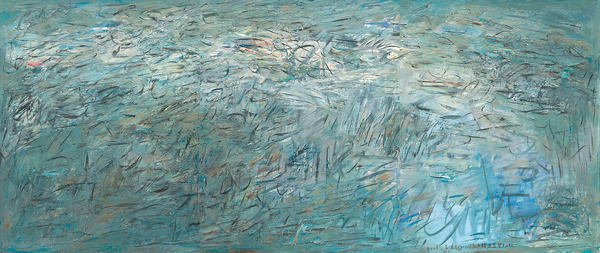

He did not confine himself to simple mimicry, and experimented with ways of expressing the feel of the land and the culture that had nurtured him.
For example, he used the graphic tension in The Old Art School, one of the pieces on display, to capture his early years at the Luxun Academy of Fine Arts and his initial attempts, despite hardships, to establish an individual style.
He made the same attempt in the 1990s with The Smelter, another piece on display, in which he addressed the transformation of the industrial city of Shenyang, where he had lived for decades.
In the later stage of his life, Zhao simplified his brushwork and the structure of his work.
Su says that he drew a lot of short, oblique lines and made use of fewer colors to express the persistence underlying the order of his paintings, "the last brilliant works of his life".
Another key to Zhao's art was his love for classical music. He would spend time with a group of close friends listening to Gustav Mahler, Ludwig van Beethoven and Richard Wagner, whose "great movements" were important to him.